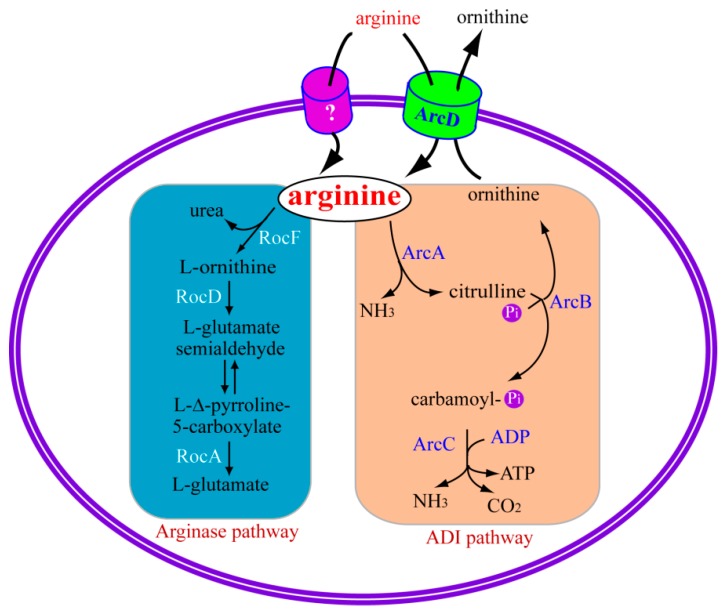Figure 1.
Simplified model for bacterial arginine catabolism by arginase and ADI pathways. In bacteria, arginine could be catalyzed by the arginase pathway (in blue) and/or the ADI pathway (in light salmon). For the arginase pathway, arginine is converted into urea and ornithine, which is subsequently catalyzed into glutamate. The ADI pathway catabolizes arginine to ornithine with the byproducts of ammonia, CO2 and ATP. The produced ornithine could be transported outside and exchange one molecule of arginine in the cell by the arginine–ornithine antiporter (ArcD) located in the bacterial membrane. Arginine may also be transported by some unknown transporters, which are shown by the question mark. RocD: ornithine aminotransferase; RocF: arginase; RocA: Δ-pyrroline-5-carboxylate dehydrogenase; ArcC: carbamate kinase; ArcA: arginine deiminase; ArcB: ornithine carbamoyltransferase; Pi: inorganic phosphate.

